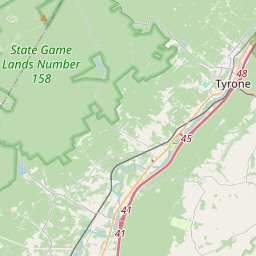Civil War
Historical marker location:






April 12, 1861: The Civil War begins with the Confederate attack on Fort Sumter, located in South Carolina's Charleston Harbor.
April 15, 1861: President Abraham Lincoln issues a call for 75,000 volunteers to serve in the Union Army to suppress the rebellion.
May 24, 1861: The first major land battle, known as the First Battle of Bull Run (or First Battle of Manassas), takes place in Virginia. It ends in Confederate victory.
September 17, 1862: The Battle of Antietam in Maryland becomes the bloodiest single-day battle in American history, with heavy casualties on both sides. The Union forces, commanded by General George McClellan, manage to halt Confederate General Robert E. Lee's advance into Union territory.
January 1, 1863: President Lincoln issues the Emancipation Proclamation, declaring that all slaves in Confederate-held territories are to be set free. However, the proclamation does not immediately free all slaves in the United States.
July 1-3, 1863: The Battle of Gettysburg in Pennsylvania takes place, resulting in a significant Union victory and inflicting heavy casualties on Confederate forces. It marks a turning point in the war.
November 19, 1863: President Lincoln delivers the Gettysburg Address, emphasizing the principles of liberty, equality, and the preservation of the Union.
April 9, 1865: General Robert E. Lee surrenders to Union General Ulysses S. Grant at Appomattox Court House in Virginia, effectively ending the Civil War.
April 14, 1865: President Lincoln is assassinated by John Wilkes Booth while attending a play at Ford's Theatre in Washington, D.C.
May 10, 1865: Confederate President Jefferson Davis is captured, signaling the collapse of the Confederate government.
December 6, 1865: The Thirteenth Amendment to the United States Constitution is ratified, officially abolishing slavery throughout the country.
While this timeline provides an overview of key events, it is important to note that the Civil War spanned over four years, from 1861 to 1865, and encompassed numerous battles, campaigns, and political developments that shaped the course of American history.
Pennsylvania was home to the first commercially drilled oil well in the world, which was drilled in 1859 near Titusville.
The county's name honors John Blair, a prominent jurist and one of the first Supreme Court justices. It was officially formed in 1846, encompassing land that was previously part of neighboring Huntingdon County. The county's central location made it an important transportation hub, with the Pennsylvania Main Line Canal and the Pennsylvania Railroad passing through its territory.
The 19th century saw significant growth and development in Blair County. The discovery of coal and iron ore in the region led to the establishment of numerous mining and manufacturing industries. The growth of the railroad system contributed to the county's economic prosperity, as goods and products were easily transported to other parts of the country.
Blair County also played an important role in the nation's history during the Civil War. The county mustered a large number of soldiers to fight for the Union, and several notable military leaders hailed from the area. The Battle of Gettysburg, which took place a short distance from Blair County, had a significant impact on the region, with many local soldiers participating in the battle.
Today, Blair County is a thriving community with a diverse economy. It is known for its natural beauty, with the Allegheny Mountains providing a scenic backdrop. The county attracts visitors with its outdoor recreational opportunities, including hiking, fishing, and hunting. While the industrial sector has declined, new industries such as healthcare, education, and tourism have emerged, contributing to the county's continued growth and development.
Blair County Timeline
This timeline provides a concise overview of the key events in the history of Blair County, Pennsylvania.
- 1767 - Blair County was first settled by settlers from Chester and Lancaster Counties
- 1846 - Blair County was officially formed from parts of Huntingdon and Bedford Counties
- 1854 - The Pennsylvania Railroad began operations in Blair County
- 1856 - Hollidaysburg was designated as the county seat
- 1861 - The American Civil War began and many Blair County residents served in the military
- 1889 - The Altoona Curve, a minor league baseball team, was established in Altoona
- 1921 - Altoona became the largest city in Blair County
- 1953 - The Horseshoe Curve, a prominent railroad landmark, was designated a National Historic Landmark
- 1987 - The Blair County Convention Center opened in Altoona
- 1996 - The Altoona Railroaders Memorial Museum opened to the public
- 2003 - Blair County celebrated its 150th anniversary